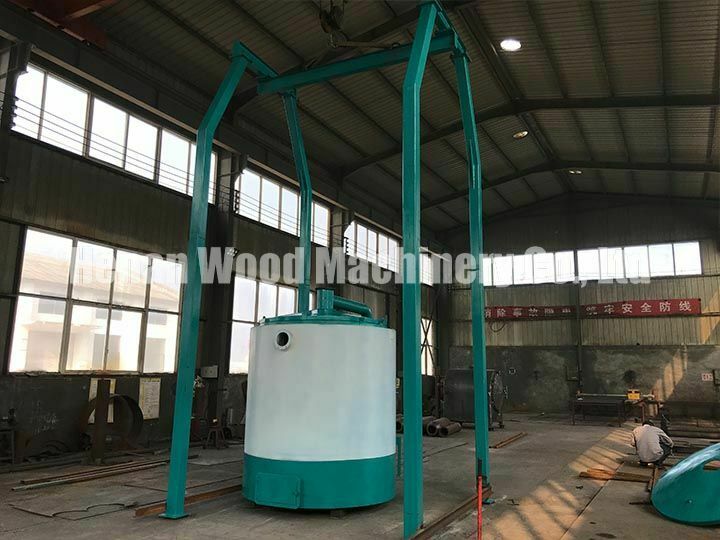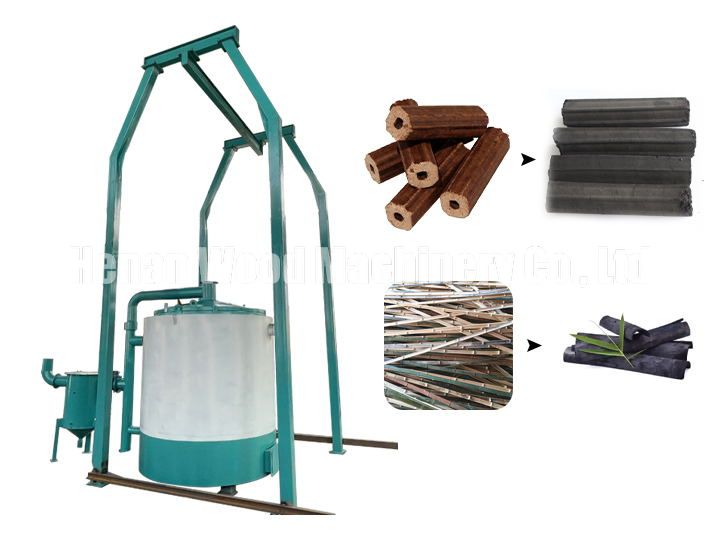Hoist Carbonization Furnace | Vertical Airflow Wood Charcoal Machine
| Model | WD-C1500 |
| Dimension | 1940mm*1900mm*1900mm |
| Inner tank size | 1500mm*1500mm |
| Output capacity | 2500-3000kg/24 hours |
| Outer bladder thickness | 6mm |
| Loading capacity | 2600-3000kg/per 8 hours |
| Weight | 2.8t |
The Hoist Carbonization Furnace designed with a vertical hoisting structure, this model simplifies loading and unloading while enabling batch carbonization with interchangeable inner tanks. It’s well-suited for processing a wide range of biomass materials such as wood, coconut shells, and sawdust briquettes.
With a daily output of up to 3000 kg of charcoal, the furnace supports high-volume operations without compromising on efficiency. Its sturdy construction, featuring a 6mm-thick outer shell and a generously sized inner tank, ensures durability under continuous use.
Equipped with a gas recycling system and smoke purification unit, it not only reduces fuel consumption but also meets environmental emission standards—making it an ideal choice for charcoal producers seeking both high output and eco-efficiency.
What raw materials are suitable for the hoist carbonization furnace?
The wood charcoal machine uses high temperatures to carbonize logs, large branches, hardwoods, coconut shells, nutshells, palm shells, bamboo, etc. The airflow wood charcoal machine can also carbonize biomass sticks made by the sawdust briquette machine. The finished products can be used as fuel or further processed into other shapes of carbon blocks.
A hoist carbonization furnace plays a very important role in the process of making charcoal briquettes. The carbonized logs, branches and bamboo can be crushed into charcoal powder, then add some appropriate water and binders. The charcoal powder will be formed into various shapes of charcoal blocks.
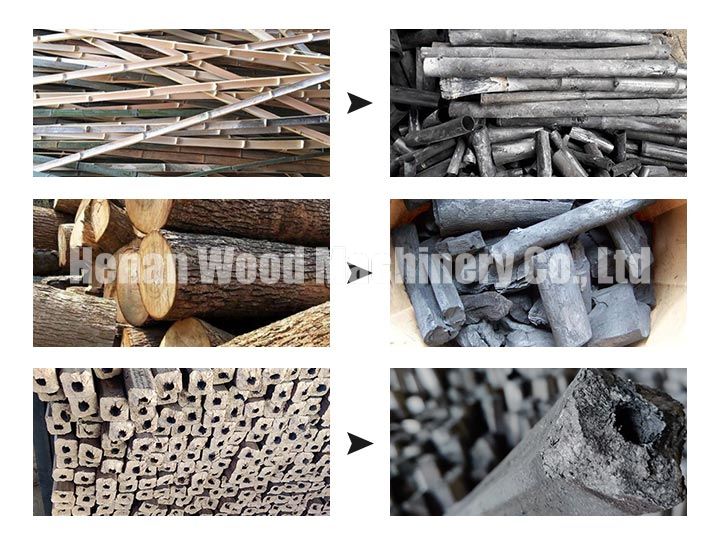
Hoist carbonization furnace structure
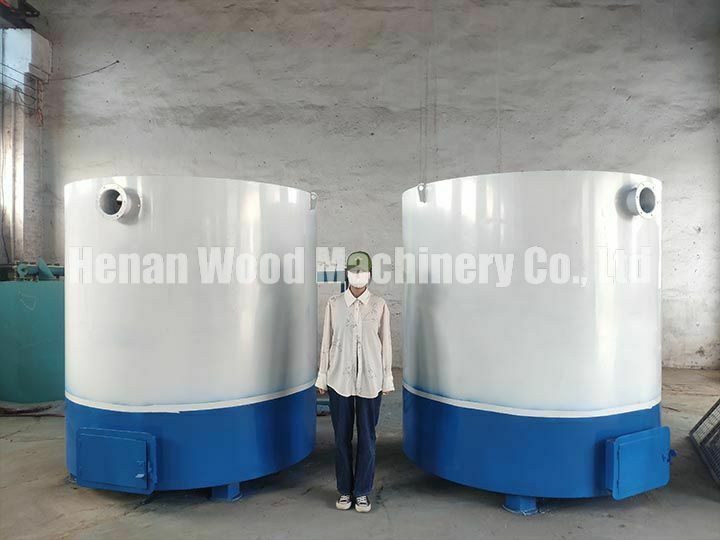
- The furnace is mainly composed of a shelf, outer tank, inner furnace, ventilation pipes, and a smoke purification system.
- The inner furnace serves as the main carbonization chamber where biomass materials are carbonized.
- A cover is installed on the inner tank, forming a sealed structure with the upper edge of the outer tank to ensure airtight operation.
- Hanging ears on the inner tank and cover allow for easy lifting and separation from the outer shell.
- The combustion chamber is separated from the main carbonization unit for safer and more controlled operation.
- Movable carbonization liners enable continuous production without preheating between batches.
- The cooling process is independent of the furnace body, making the structure simple, safe, and easy to operate.
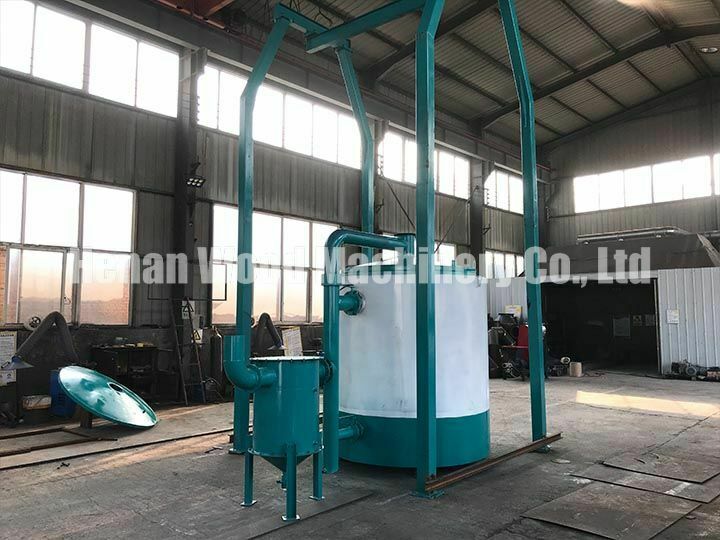
How does the hoist carbonization furnace work?
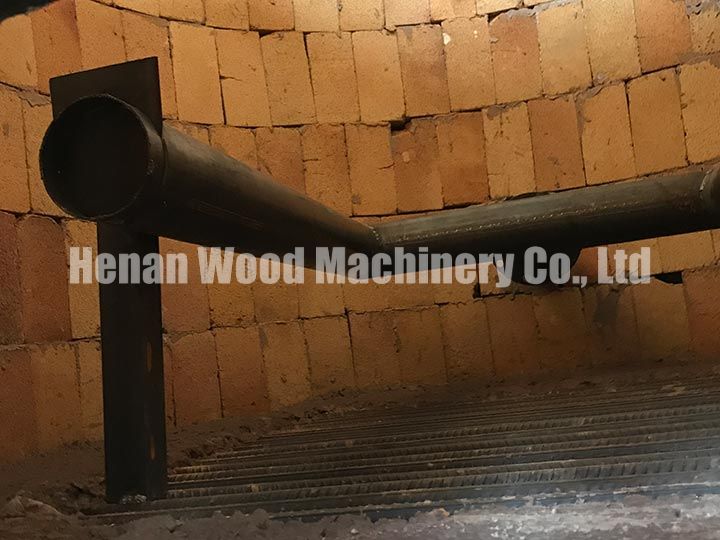
- The inner tank is hoisted into the outer shell.
- Fuel is burned in the combustion chamber at the bottom.
- As wood burns in the furnace, combustible gas is generated.
- These gases circulate and are heated in the perforated pipe.
- No need to refuel when the fuel is burned out.
- Observe the pipe in the combustion chamber.
- Carbonization ends when the hole on the pipe no longer fires.
Charcoal carbonization process
- Open the cover of the carbonization furnace.
- Lift out the furnace and place it in the charcoal loading area.
- Open the lid of the inner tank, put the furnace on a slant, and install the rods.
- After the rod is installed, cover the furnace lid, and hang the furnace into the outer tank.
- Open the smoke outlets of the furnace body in turn, cover the furnace lid tightly, and start carbonization.
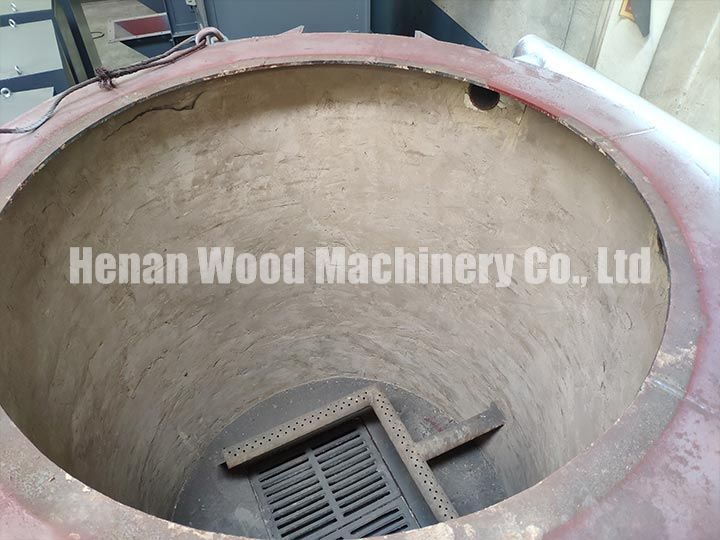
Advantages of hoist carbonization furnace
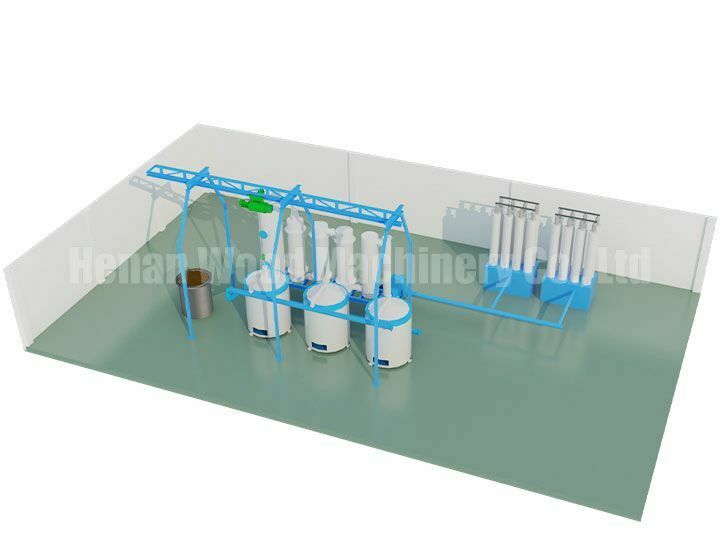
- The furnace has a strong load-bearing structure, supporting over 2 tons and requiring minimal maintenance.
- Combustible gas is recycled during operation, eliminating the need for constant refueling and reducing labor.
- Both the outer shell and inner tank are made of Q245 steel with refractory lining, ensuring durability and resistance to collapse.
- The compact design with remote-controlled hoisting makes operation safer and more labor-efficient.
- Equipped with three inner tanks, the system allows continuous carbonization without waiting for cooling or preheating.
- The separate structure of the furnace and combustion chamber, along with movable liners, enhances productivity and flexibility.
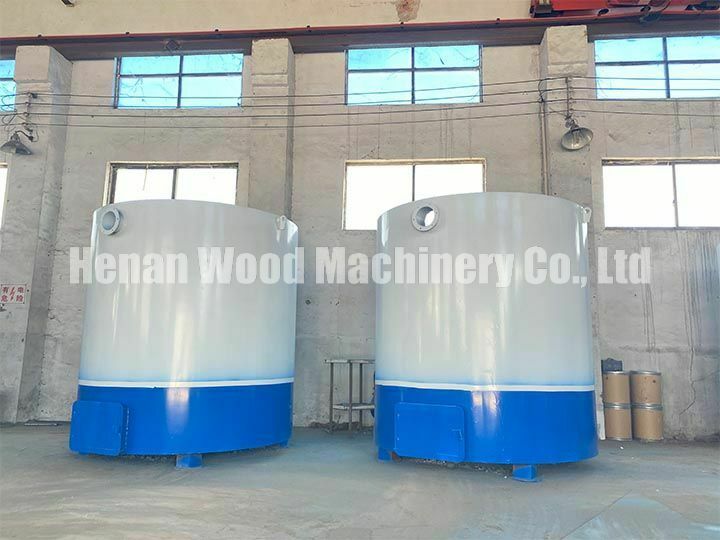
Application of carbonizing furnace products
After carbonization, biomass wood sticks can be directly used as fuel for barbecue, home heating, etc. After bamboo, logs or branches are carbonized, the structure is relatively loose and the calorific value is not high. It is a bit wasteful to use them directly as fuel.
We recommend pairing with a charcoal production line. In the production line, we pulverize the charcoal, mix it with a binder, and use different professional machines to make charcoal briquettes. These charcoal shapes are regular, hard, and dense, which are high-quality charcoal blocks.
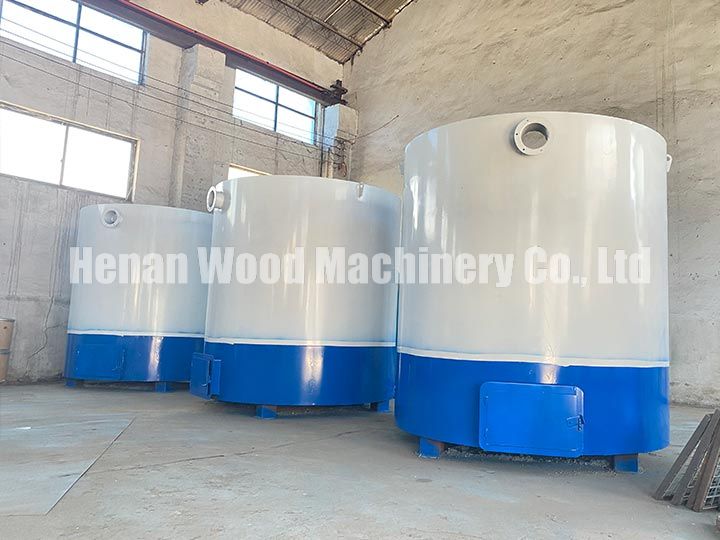
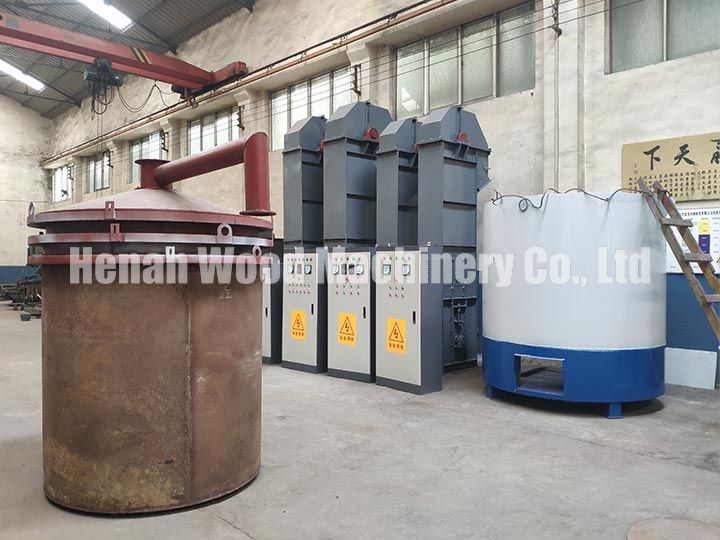
Hoist wood charcoal machine parameters
| Model | WD-C1500 |
| Dimension | 1940mm*1900mm*1900mm |
| Inner tank size | 1500mm*1500mm |
| Outer bladder thickness | 6mm |
| Output capacity | 2500-3000kg/24 hours |
| Loading capacity | 2600-3000kg/per 8 hours |
| Weight | 2.8t |
The model of charcoal carbonization furnace is named after the diameter of the inner tank. The larger the diameter of the carbonization furnace, the larger the volume, and more raw materials can be carbonized.
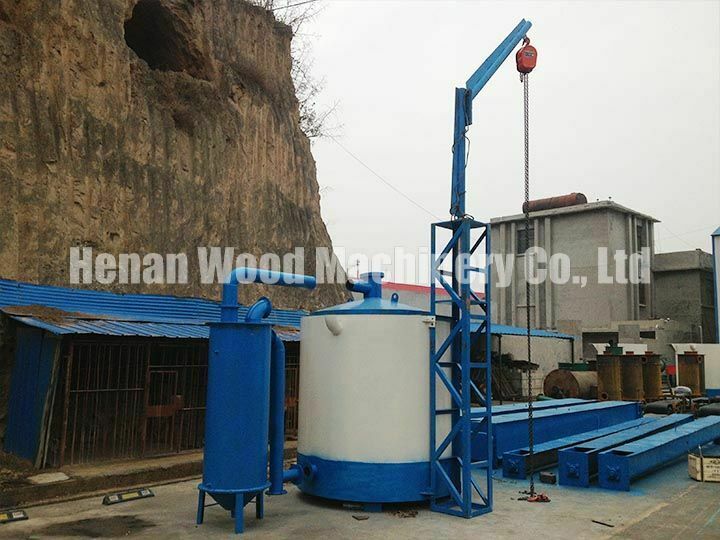
FAQ of hoist carbonizing furnace
What kind of fuel is used in the combustion chamber of the carbonization furnace?
Waste materials and wood, coconut shell, coal, and wood pellets can be used (a burner is required).
What is the density of the finished charcoal?
The density of wood sticks is about 1-1.3 tons cubic meters, and the denser charcoal is more resistant to burning.
Will the waste smoke and exhaust gas produced by the hoist carbonization furnace cause environmental pollution?
The machine is equipped with removal equipment. We also have high-voltage electrostatic purification equipment, if the requirements are high, which can maximize the reduction of smoke emissions.
Can olive pomace be used in a vertical carbonization furnace?
No, the machine carbonizes all hard materials. If you have to use it, it is recommended to use a sawdust briquette machine to make olive pomace into a hard biomass rod and then use a hoist carbonization furnace to carbonize it.
How to put the raw materials into the feed inlet?
Configure the row crane, put the raw materials into the inner tank first, use the row crane to lift the inner tank and put it into the outer tank, and then burn it.
What is the output of the carbonization furnace?
Our carbonization furnace has three models, the output is 300kg/4-6 hours; 600kg/6-8 hours; 1000kg/8-10 hours. Among them, this one with 1000kg/8-10 hours is the most popular.
Why is the charcoal obtained after burning less than the raw material?
Because the water in the wood evaporates, the lignin is combined and converted into carbon, and 3-4 tons of raw materials can be made into 1 ton of carbon.
Will there be by-products?
A small amount of wood tar and wood vinegar will be produced during the carbonization process. They are obtained by natural cooling and liquefaction of the smoke emitted during the burning of wood into charcoal.
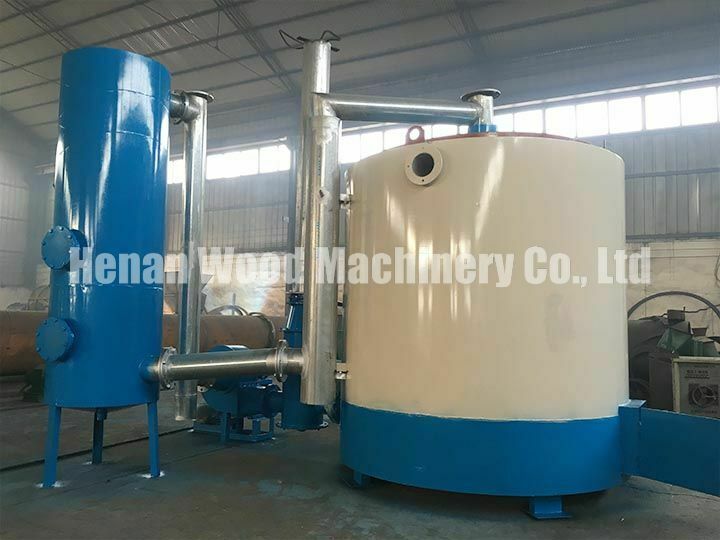
Conclusion
With its durable construction, energy-saving design, and ability to operate continuously with multiple inner tanks, the Hoist Carbonization Furnace offers an ideal solution for efficient, large-scale charcoal production.
Whether you’re looking to reduce labor costs, improve output, or switch to a more eco-friendly production method, this machine delivers on all fronts.
If you’re ready to upgrade your charcoal production line, contact us today for a customized solution tailored to your needs.
